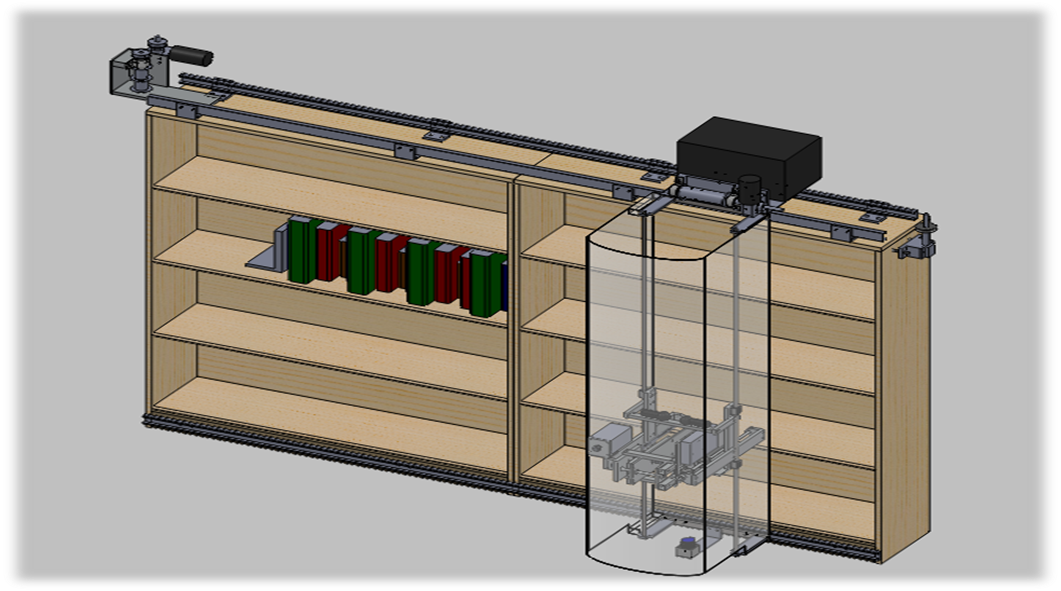What is the BRASS System?

The BRASS system is an autonomous mobile robot capable of stocking and retrieving books in an unmodified standard library. The goal of the project is to improve the efficiency of use and management of existing libraries without comprising the traditional browsing experience. The technology developed is expected to have possible extensions to other related areas with less defined inventory shapes and weights. Possible extensions could include automated grocery shelves, a lower cost alternative to full scale warehouse automation, etc.
What's Wrong with the Library?
 A typical user interacts with a library in one of two ways. The first case is when exact item desired is known ahead of team, in which case the library patron must simply navigate to their desired location based on the organization system in use. The second case is when only the desired item is unknown (perhaps the only the subject area is known). In the second case the user typically will locate a relevant section of the library and browse the available selections before making a selection.
A typical user interacts with a library in one of two ways. The first case is when exact item desired is known ahead of team, in which case the library patron must simply navigate to their desired location based on the organization system in use. The second case is when only the desired item is unknown (perhaps the only the subject area is known). In the second case the user typically will locate a relevant section of the library and browse the available selections before making a selection.
While both of these two use cases can be managed quite reasonably within the space of a small library, it quickly becomes quite time consuming as the size of the library increases. For example, consider the United States’ Library of Congress. The Library of Congress contains a staggering 147 million items on 838 miles of bookshelves. The Library of Congress adds an estimated 10,000 additional items daily!
While the Library of Congress provides an extreme example, attempting to manually stock or search a library even a tenth of its size remains equally unattractive. In any one of these cases it is quite clear that retrieving an item can take much longer than desired, that restocking shelves can be tedious work, and that opportunities for misplaced or improperly sorted books are rampant.
So What is the Need?
There is a need for an alternative solution to library management. One alternative would simply be to digitize the contents of the entire library; however, for even a small public this could take years of extremely tedious work. It thus becomes apparent that there is an opportunity for the development of an autonomous robotic system capable of greatly improving the speed and efficiency of use of traditional libraries.
For such a system to be practical, it would have to integrate easily with existing library infrastructure – preferably requiring no re-organization or expansion of the shelving units. It also has to preserve the ability to browse or sample the content of a book. Within the context of an existing library this would most easily be accomplished by allowing the system to safely interact with people. There are a variety of solutions on the market which offer autonomous warehousing solutions. Examples include systems offered by Kiva Systems, ALS, or Unitronics. However, all of these systems require a complete re-design and reorganization of the warehouse being upgraded.
There is thus a gap in the market, with an identified need for an automated warehousing solution that can be deployed to existing infrastructure while maintaining the ability to safely interact with warehouse patrons. In particular, the library system is an excellent example of a warehousing problem that could benefit greatly from such a solution.